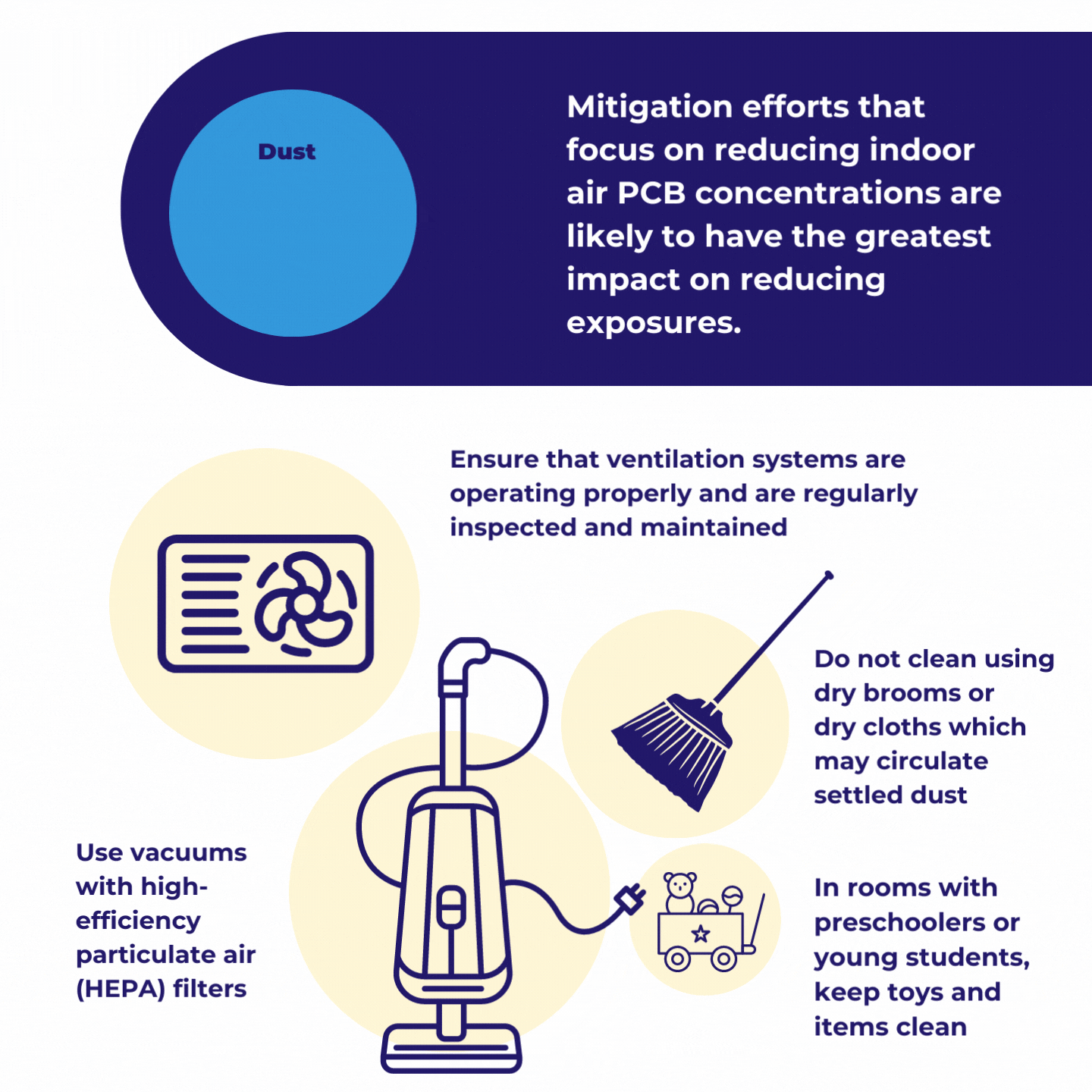Find out where PCBs appear in school buildings and why it’s a problem
PCBs were manufactured locally for building materials in the United States from around 1930 until 1979, a period that coincided with a boom in building schools to meet the demands of the growing birth rate of ‘after war. This increases the vulnerability of any school built or renovated before 1979.
Although the United States Environmental Protection Agency banned the manufacture of PCBs more than 40 years ago, PCBs are still a concern for school buildings because:
- Application durability means that schools that were built or renovated before 1979 may still have PCBs used in a variety of applications like caulking, sealants, coatings, and electrical components.
- PCBs migrate, vaporize and absorb into other materials and can be stored in our body for a long time, so prolonged and sustained exposure has a cumulative effect.
- Studies show that high-dose exposures can impair learning, growth, immunity, and pose other health risks.
Main sources of PCB emissions in former school buildings
The factors that have made PCBs attractive in construction applications also make them a persistent and ubiquitous contaminant in a school building. Several primary sources of emissions, shown in the diagram below, are possible in any building, impacting the air quality in a facility.

PCBs move and transfer, creating secondary sources of harmful emissions
Heat and weather create conditions in which PCBs transfer, move, evaporate and absorb into the surrounding environment, creating secondary sources of PCB emissions. Secondary sources include classroom furniture, carpets, paper, paint, dust, and any classroom materials that can absorb and then emit PCBs. These secondary sources can result in continued exposures even after the primary sources are removed or remediated.

Prolonged and routine exposure is problematic for building occupants
The durability of PCBs is affected by natural weathering, heat, and they can even be released when schools attempt to dismantle and remove the sources. Exposure can occur by inhalation, direct skin contact and ingestion.
As we know that humans store PCBs in their bodies, prolonged and routine high exposure is problematic.


PCB exposure is associated with a range of toxic responses rashes to the cardiovascular, gastrointestinal, immune, musculoskeletal or neurological systems. But what’s particularly troubling for schools is that high exposure to PCBs can have long-lasting effects on development and learning.
Studies show that high levels of exposure can lead to:
- Cancer, including non-Hodgkin’s lymphoma
- Skin lesions or rashes
- The Depression
- Nausea
- Vomiting
- Abdominal pain
- Headache
- Dizziness
- Reproductive disorders
- Greater susceptibility to pneumonia and viral infections
- Memory, vision and attention span disorders
- High blood pressure
- Diabetes
- Neurological and developmental delays in young children and children exposed in utero
- Weight gain or loss in children born to exposed women
Spotlight on Three Common Sources of PCBs
Below, see the behavior of three common emission sources typical of a school building.

Inhalation is responsible for the majority of exposure that could occur in schools
PCBs evaporate slowly at room temperature, but vaporize rapidly with increasing temperatures due to weather, heating, or use of equipment or lights. The vaping process creates an inhalation hazard which can be amplified by poor ventilation and dusty environments. Improving air quality is a key first step in reducing PCB concentrations.

Sources: United States Environmental Protection Agency, Centers for Disease Control and Prevention, National Library of Medicine and Education Week reports
All visual animations by Laura Baker/Education Week via Canva


Comments are closed.